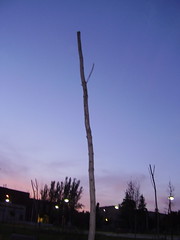interpreting "two pigs, six silver spoons, and eight hoes"
Working with old newspapers is difficult because it is almost impossible to suppress the instinct to browse. After all, that's how we read the newspapers with today's date on them: we wander through them. Browsing is not a bad thing, of course, and can sometimes take your research to unexpectedly fruitful places. It also helps to put you in a similar frame of mind as the publication's original readers: they probably wanted to be informed but also entertained. When you're faced with thousands of issues, however, lack of focus can make you lose sight of your original questions. When you're faced with millions, lack of focus reaches entirely new levels. How can digitized sources help to keep our research on track?
I looked up databases with digitized newspapers and found that they only exacerbated the problems that I had faced before. They seem to have really opened up the breadth of possible research. But they do not provide ways to organize that research in any meaningful way. I have about 1,500 digital photographs taken from a weekly newspaper called Orientación, published by the Archdiocese of San Salvador. My sample spans from 1951 to 1984. I don't want any more for the time being. It is very easy to get lost in what I have. How do organize the various stories that seem to develop independently of each other through the decades? Should I be looking for other things aside from the explicit stories or arguments in the articles? How do I keep track?
Some of the questions I am asking would be easy to keep track of through time with a simple Excel work sheet, or even by tagging photographs on iPhoto with several key words in order to be able to do a quick search. With a little organization, I could trace how anti-communist rhetoric evolved into social justice rhetoric, for example, or a timeline of how the metropolitan cathedral was rebuilt after it burnt down in 1951 (the reconstruction took over 50 years). These things are related to the explicit content of the articles and hardly involve a very close reading. But in looking at the way people have used their sources to reinterpret the past, I was particularly impressed by Thatcher Ulrich's work on labor in the eighteenth century, and in my own field, Muriel Nazzari's Disappearance of the Dowry: Women, Families, and Social Change in Sao Paulo, Brazil, 1600-1900. Nazzari used "inventarios" spanning several centuries as her sole source; they are the same thing, pretty much, as probate inventories.
Nazzari uses the dowry as a focal point in evaluating how property-owning families (a corporate unit including both father and mother) changed their behavior toward their sons and daughters over the course of three centuries, 1600 to 1900. Her argument is straightforward: the disappearance of the dowry meant that women went from being the buyers of men to being bought. The development of individualism and market forces caused the splintering of the patriarchal clan and a subsequent shift of the family’s allocation of resources. The privatization of women’s roles was due not simply to ideological shifts, but the emergence of a vastly different economy.
All of this, Nazzari concludes after interpreting data like "two pigs, six silver spoons, eight hoes" and seeing how it changed slowly over time. She took advantage of the publication in several volumes of the inventarios in the archives of Sao Paulo until the late nineteenth century. These were not digitized, however, and she had to deal with a representative sample for each period to keep the study manageable. If she could have isolated the data and then been able to have links between different kinds of data, she could have probably had a much larger sample, but I don't think it would have significantly changed the research itself.
There are several things in my sources that I think could work in a similar way--details that only start to take shape as a larger picture when they are compared with each other through time. What I took from Nazzari for my own work is an approach to sources. Granted, a newspaper is a different kind of source. Articles are different from wills. But there are parts of the newspaper that matter-of-factly record certain yearly events, or the amount of money gathered for the rebuilding of the cathedral, or the amount of people who showed for the festivities of the patron saint. A database of some kind would really help me to isolate these and compare them to the broader stuff being discussed in the articles.
At this point, I think it's time to pick up a pencil and some paper, since there's only so much a person can do with a keyboard.


0 Comments:
Post a Comment
<< Home